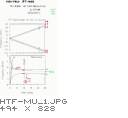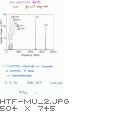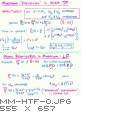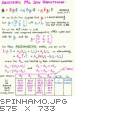
|
Actually the first (and most unambiguously useful) applications of
FT-µSR were to complex spin systems in which the muon
polarization oscillates at many frequencies simultaneously.
Of the many examples available, I chose the classic study of
Mu* in semiconductors as an illustration.
Whereas ESR (or EPR if you prefer) usually probes the
spin Hamiltonian by sweeping the magnetic field through the resonances
on the Breit-Rabi diagram at fixed RF frequency,
FT-µSR reveals all the frequencies at once for a given
magnetic field.
|

|
In gallium arsenide (like many other semiconductors,
fortuitously excluding Si, Ge and diamond)
the nuclei have their own HF interaction with the muonium electron,
broadening the lines so dramatically at low field that they cannot be
observed in TF-µSR. Fortunately, at high field
(in this case 1.2 T) the nuclear hyperfine (NHF) splittings are
reduced to the point where the muonium HF structure can be seen
clearly.
|

|
These formulae show how the muon polarization evolves in strong
transverse field (TF) and longitudinal field (LF)
assuming (often incorrectly) a scalar (isotropic) Mu HF interaction.
|

|
In most semiconductors and insulators muonium
experiences an anisotropic spin hamiltonian.
|

|
Another important use of FT-µSR is in the spectroscopy of
radicals. Rather than show one of the many examples from
muonium chemistry, I have chosen the rather exotic case of
cis-polyacetylene, a solid composed of the cis isomer of
polyacetylene (the trans isomer forms an organic semiconductor).
Notice the partially resolved NHF structure in the solid;
in liquids, these splittings tend to be averaged away
by rapid rotation and tumbling of the molecules.
|